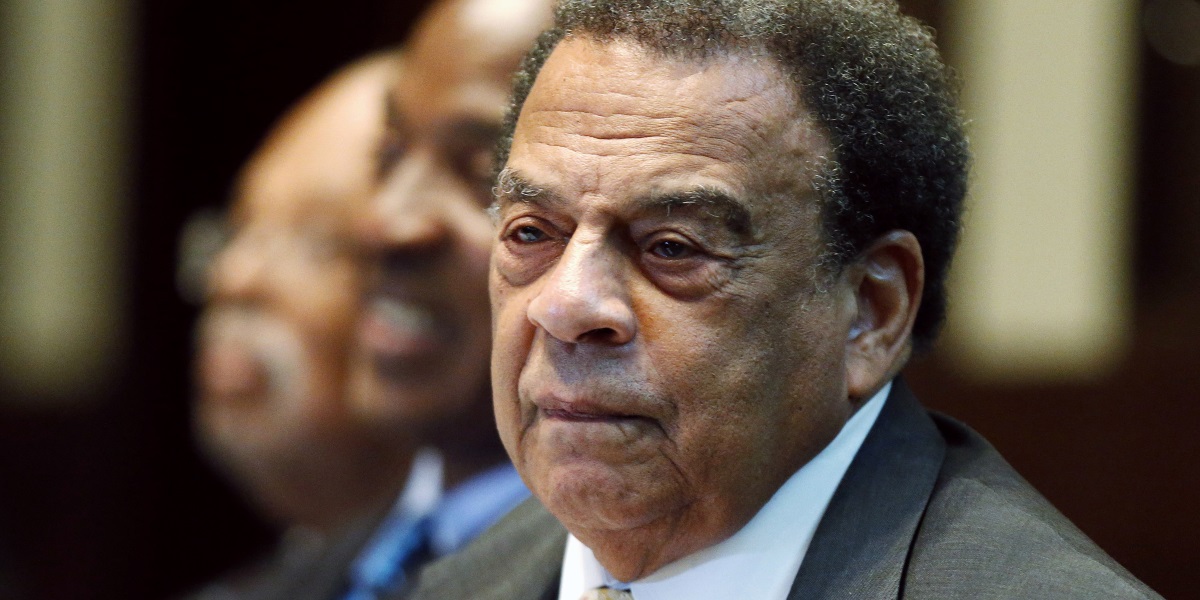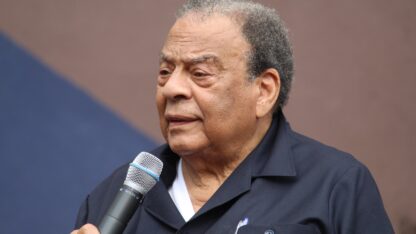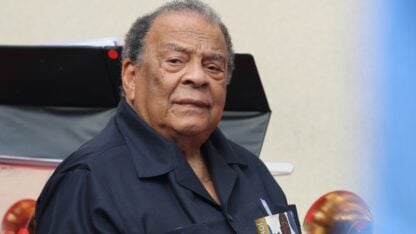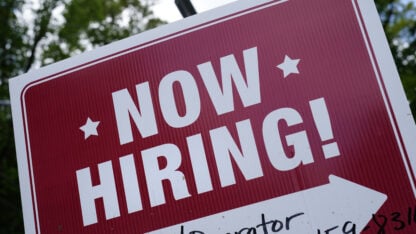More than a million people have visited the National Memorial for Peace and Justice in Montgomery, Ala., since it opened four years ago.
It’s a project of the Equal Justice Initiative (EJI) that remembers thousands of lynching victims. Their names are etched on 800 steel blocks — one for each U.S. county where racial killings occurred. The monuments hang from an open-air pavilion on a hilltop overlooking the Montgomery skyline.
Now the memorial is expanding.
“We call this new section Community Reckoning,” says EJI founder and Executive Director Bryan Stevenson. “It’s the way in which communities are asking localities to kind of reckon with this history — to remember, to talk more honestly and more thoughtfully about what this history represents.”
Lynching violence was local, Stevenson says. Here, visitors get a more detailed narrative about specific cases in the form of historical markers that look like what you might see alongside a highway. They represent similar signs that local groups have erected around the country based on the EJI’s research.
“This one is in Brighton, Ala.,” Stevenson says as he walks down a path lined with the steel markers. “It’s about a black man who was lynched for trying to organize black workers to get better pay.”
There are lynching markers from Orlando, Denver and Tulsa. The exhibit also includes a sculpture by the artist Branly Cadet called “Arise.” It shows community activists — one is speaking into a bullhorn; others appear in prayer or reflection. Stevenson says the models for the piece were all descendants of lynching victims.
“They represent the work that people in communities are doing each and every day to get their locality to reckon with the history of violence that took place,” he says.
According to EJI, more than 300 community coalitions worked to erect lynching markers in 20 states. But Stevenson says the effort has been harder in some communities than others.
“I think that’s just the nature of trying to respond to a 400-year history of silence,” says Stevenson. “I’m not even surprised by the resistance. And you see some of these new efforts to try to ban the teaching of history. But I think that’s always been the reaction to progress.”
He points to the emergence of Jim Crow laws after Reconstruction and the violent resistance to the civil rights movement.
A new generation wants their voices heard
Activists say the country is at an inflection point again, as more people find their voices after the racial justice protests of 2020.
“It’s like almost as if the civil rights movement has just begun again with the new generation,” says Morris Sinclair with the Blank Slate Movement.
The group is touring the country with a sculpture called “Blank Slate” by the Ghanaian artist Kwame Akoto-Bamfo. The monument is on display in Montgomery at the Southern Poverty Law Center’s Civil Rights Memorial Center.
It’s a towering piece in which four figures are stacked to represent the historical suffering of African Americans. An enslaved man in shackles is at the base, supporting a Black Union soldier, a noose around his neck. Above the soldier is a woman with a baby on her back. She carries a beacon in one hand and a sign in the other.
“She’s holding a blank slate,” says Sinclair. “She is holding that so that she can interact with our generation that is here today.”
The sign is interactive — people connect to it through a Wi-Fi signal and post their own thoughts. In Montgomery, people write “Black is Beautiful” and “Stories Heal Our World” among other messages. Sinclair says the messages will be stored and preserved. He says the idea is to embody the resilience of Black Americans.
“I’m energized by it,” says local artist Michelle Browder, who leads civil rights tours in Montgomery.
“To see this woman with a baby on her back holding a lantern, lighting the way to, you know, the continuation of this movement to let us be free.”
This sculpture comes as a counter-narrative to Confederate monuments, says Tafeni English, director of the Civil Rights Memorial Center, and as a response to new state bans on critical race theory instruction and the teaching of what some politicians consider divisive concepts.
“How is it that you want to hold on to one segment of history and silence the other?” English asks.
Montgomery is full of Confederate monuments — the city bills itself as both the Cradle of the Confederacy and the Birthplace of the Civil Rights Movement. And there’s rich history around nearly every corner — the state Capitol steps where Jefferson Davis took the oath of office as president of the Confederacy and where former Gov. George Wallace declared “segregation forever” are just a block from the Dexter Avenue Baptist Church where the Rev. Martin Luther King Jr. was pastor and helped lead the Montgomery bus boycott.
But it has taken decades for sites associated with the slave trade, for instance, to get equal attention to ones that glorify the Old South. Now they do.
And new places are being discovered. A historical marker went up just last year in front of a squat red-brick building downtown.
“This is Bricklayers Hall,” explains John Key with the Alabama Civil Rights Tourism Association. “It was built as the Black Bricklayers Union in 1954.”
A year later, he says, it became a hub of operations for the Montgomery bus boycott.
“This Black Bricklayers Union was Black-owned so they couldn’t get run off from it,” says Key.
Civil rights history is driving tourism in Montgomery
His group leases part of the building as a gathering place for civil rights tours and invites participants in the movement to share their stories. He says the industry is booming after the Equal Justice Initiative opened its Legacy Museum and the National Memorial for Peace and Justice in 2018. Key says it has transformed the city.
“It not just enhanced, it drove tourism in Montgomery,” says Key. “We see just tremendous busloads [of tourists]. And it is a calling card for this city.”
EJI founder Bryan Stevenson says the response has been affirming, but the ultimate goal is what visitors leave with.
“We want them to think. We want them to reflect,” says Stevenson. “We want them to imagine what they might do when they leave here to contribute to a more just society where this sort of violence and this kind of bigotry never manifests itself again.”
Copyright 2022 NPR. To see more, visit https://www.npr.org.
9(MDAxODM0MDY4MDEyMTY4NDA3MzI3YjkzMw004))
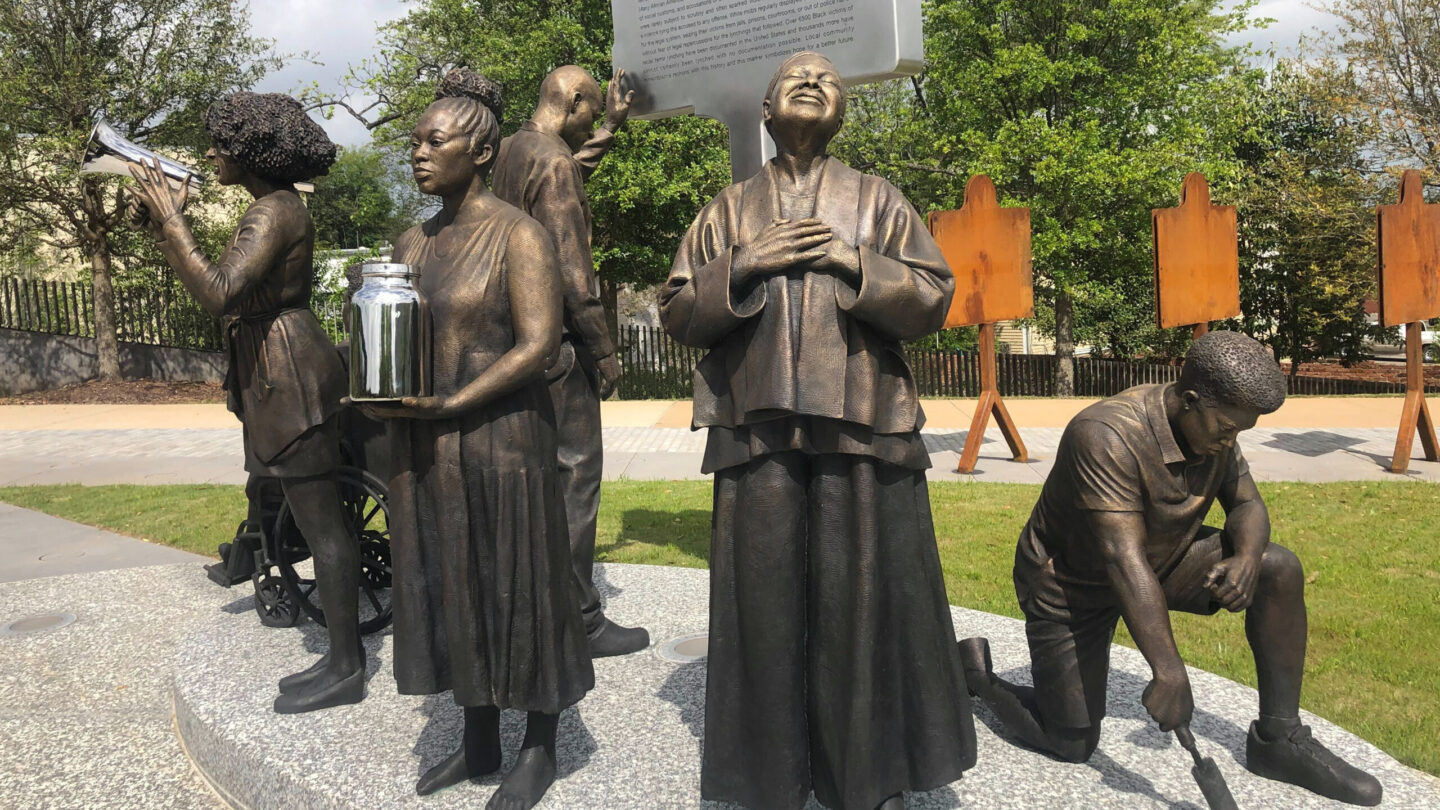
9(MDAxODM0MDY4MDEyMTY4NDA3MzI3YjkzMw004))
